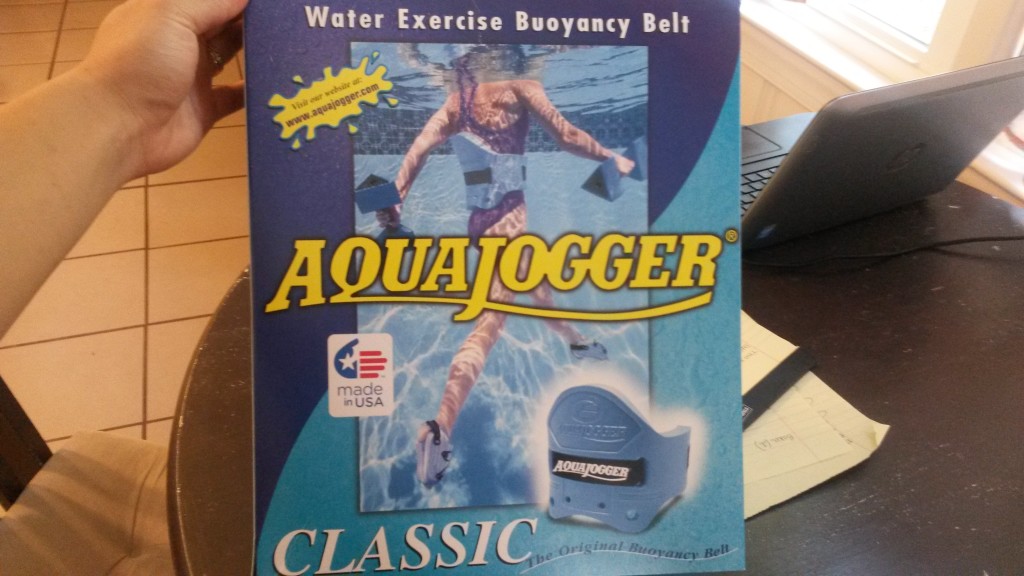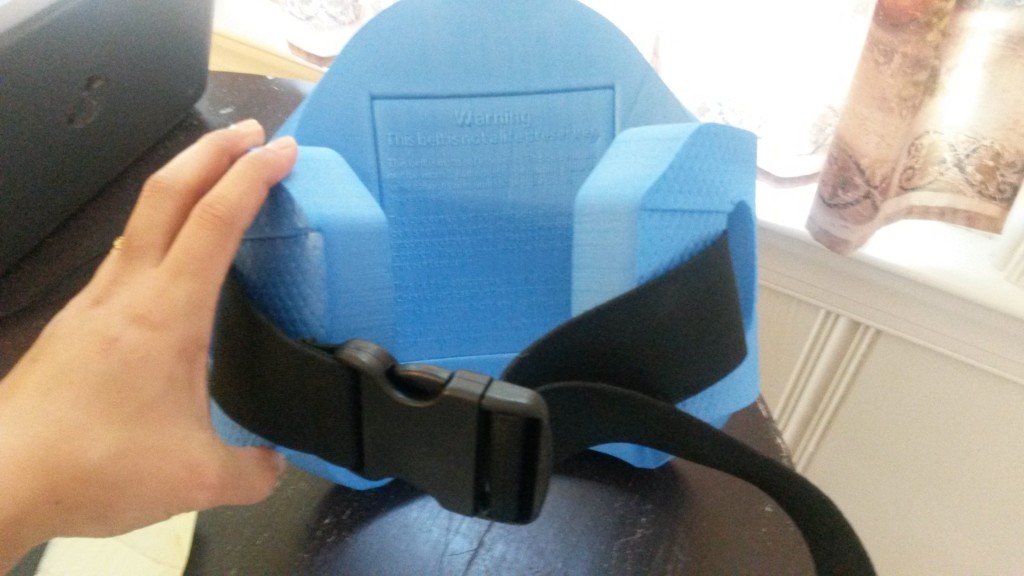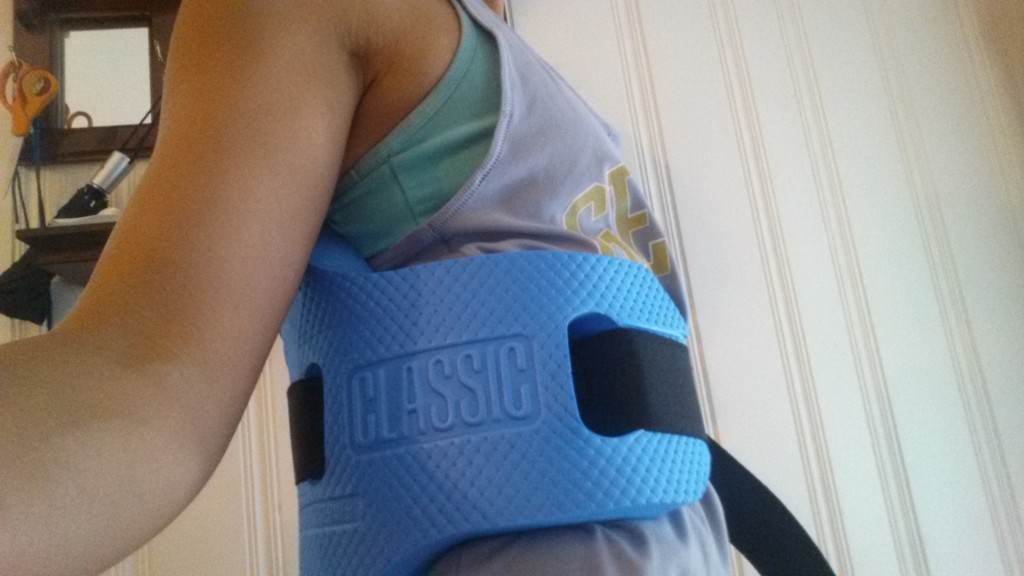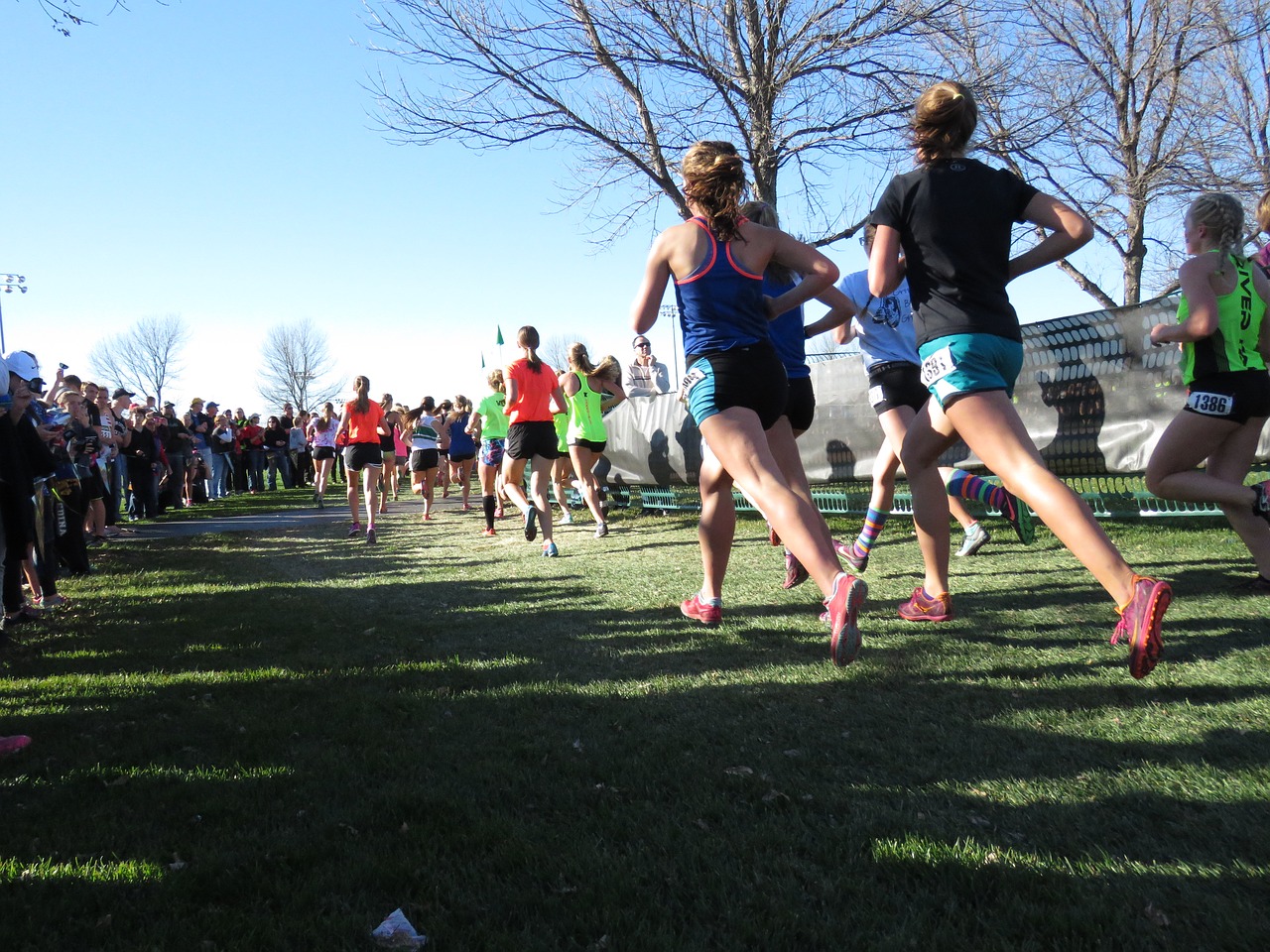I’m still struggling with foot pain and the marathon looms ever closer. I considered buying some time on Savannah’s only zero-gravity treadmill (and I still might), but I wanted a more cost-effective method. So I thought I’d try pool running with plantar fasciitis continuing its lingering hold.
I bought an AquaJogger buoyancy belt (affiliate link, but before you buy, realize that many aquatic centers have belts for use) for pool running, aka deep water running, aka aquajogging.
I’m not going to call it aquajogging.
I’m sorry.
I don’t like the word “jogging”… adding “aqua” as a prefix does not help.
Benefits of pool running with plantar fasciitis (or another injury)
- You can keep aerobic fitness for up to 6 weeks (study)
- Pool running is the closest cross-training workout, recruiting more correct muscles than cycling or swimming
- Zero impact makes it perfect for plantar fasciitis! Only those with hip-flexor and some knee injuries should be wary.
- You look really cool in the belt.
I sadly did not buy the shoes or the dumbbells. Although those would have completed the outfit…
The belt fits around the waist with the large foam part in the back. The device claims it has a “versatile fit for both men and women”. I was skeptical because I am half the size of most humans.
It did not fit as presented in the diagram, below the rib cage and above the hips. It felt uncomfortable above water. I flashbacked to childhood days of flotation devices pushing me out of the water or rising over my chest into my arm pits. But alas, I had zero problems with it underwater.
I went to my city pool, which I quickly found closed on Fridays. Not discouraged, I paid money to enter my local aquatic center.
I felt like a child putting on her swim wings and rubber-ducky inner tube by the edge of the pool. I felt like a dummy.
But, remember…
So I snapped on that sucker and waddled to the ladder.
I was much less embarrassed once I was in neck-deep in the water. Although, I’m sure some people thought I was trying to incorrectly teach myself to swim as I did laps.
How to: pool running with plantar fasciitis
- The belt floats you neck-deep with your head above water. Find a depth where you cannot reach the bottom with your feet (for me, that was not very deep).
- Remain upright or slightly forward with a straight posture, tight core, and pelvic tilt. Don’t bend at the waist or hunch your back.
- High knee up and push down with a flexed foot, with a runner-like follow-through.
- Pump your arms at 90 degree angles, similar to running.
- Tada, you’re pool running! You may move forward, or you may not.
My experience pool running with plantar fasciitis
With the increased resistance and lower heart rate, I struggled to judge and keep up harder efforts/intensities. It’s not like a treadmill that will throw you off if you slow down or swimming where you… drown. My body didn’t give me a lot of feedback — or maybe I’m just not attuned to it yet. Sheer will and determination kept my legs moving.
I did 15 min easy pace, pyramid of 1-2-3-4-5-4-3-2-1 minutes of higher intensity with 1 min active recover, then 12 minutes easy pace. = 60 minutes
I can’t lie. It was boring.
Only my desire to gain fitness kept me in the pool.
At the end, I felt like I did a good workout, a harder workout than running 2 miles and a more aerobic workout than yoga class. My muscles felt tired and my appetite was up.
Those are good signs.
Sources and Further Reading
- Strength Running: Pool Running: Why You’re Doing it Wrong and How to Pool Run to get Faster
- Runner’s Connect: Aqua Jogging for Runners: The Scientific Research and 7 Workouts That Will Make Your Heart Explode
Related Posts:
- The Monotony of Pool Running
- Night Splints for Plantar Fasciitis
- 3 Principles in Treating Plantar Fasciitis
*Note: this post has Amazon affiliate links. If you click a link and buy a product, I may earn a small commission. It does not cost you extra, but helps support me and my blog. Thanks!










Hello, I am struggling with this! I’ve had chronic plantar fasciitis for 3 years. After 15 years of running and yoga and working long hours as a nurse my feet are in trouble. I haven’t run in 3 years. I’ve stopped teaching yoga ( i did this for 10 years) I have kept working. After trying many podiatrist recommendations, the night splints, ice and exercises etc. I’ve had my feet put into hard casts. (One at a time). When the cast comes off in 2 weeks I plan to hit the pool. I have gained 20 pounds during this period of 3 years and I know losing weight will help. I don’t want to lose my gains of de-escalating the inflammation through casting and rest. So i’m trying to be very smart about how i approach pool work outs. While my doctor is all for the pool, he’s not a sports doctor.
This last year even cycling and lower body weightlifting has triggered painful flareups.I’m thinking the pool is my last resort.
I’m looking for suggestions on pool work outs. I hope to mix it up. I’m hoping to start with water aerobics at a nearby gym and then get more self directed as my comfort level increases. I don’t want to do anything to aggravate my feet (Like pushing off walls when doing laps)
I’m considering fins or the jogger shoes but I don’t know if they will make it better or worse.
Any feedback would be appreciated
Wow, Daisy! I’m so sorry that you’re struggling with this. PF is just awful. I’m not a doctor either, but the fins and aquajogger shoes increase resistance in the water – so they might be something to work up to rather than to start.
Know that there is shallow water aerobics and deep water aerobics. If you don’t want any weight on your feet, deep water would be the way to go. Also, some gyms/aquatic centers offer pool running classes.
code promo 1xbet haïti